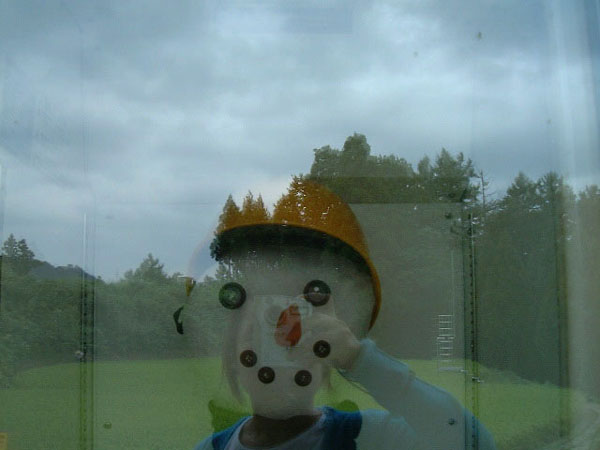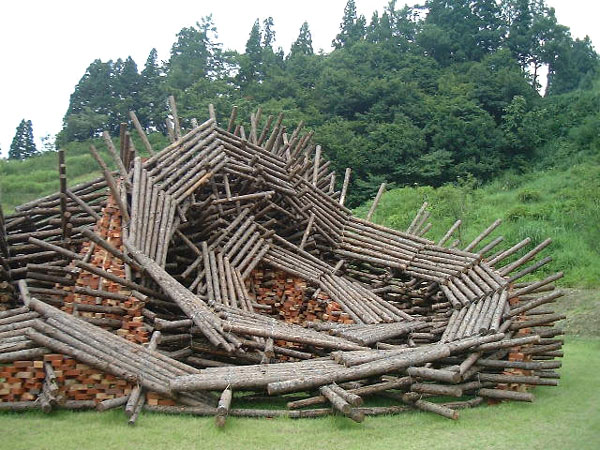ECHIGO-TSUMARI ART TRIENNIAL 2000
Matsudai Town has the greatest number of artworks in this festival. In this city, you will learn the culture that local people have learned from harsh winter with heavy snowfalls and their agricultural culture developed in Mother Nature.

‘Five Sculptures on the Mountain, Where the Rice Is Grown’, Ilya & Emilia Kabakov
Ilya & Emilia Kabakov were touched by the agricultural culture under the harsh winter with its heavy snowfalls and created a series of sculptures titled ‘Five Sculptures on the Mountain, Where the Rice Is Grown’. With 5 sculptures and 5 texts, it expresses each process of traditional rice production – preparation of the soil, placing of the rice, tending to the first crops of rice, harvesting the rice and taking the harvest of rice from the field. Enjoying the view of the sculpture through the text (written in thin metal wires on the balcony) at a few meters distance from the sculptures, you will be able to understand the agricultural culture of this region with the heavy snowfalls.

‘Carpe Diem’, Simon Beer
Simon Beer’s ‘Carpe Diem’ lets us know that there’s something fun in such harsh winter. Six snowmen created together with local children during winter are still living in freezers. Each snowman has personality and they symbolize the six municipalities and the family. When the festival was over, they were melted and returned to the earth.

‘The Seat of Rain Spirit’, Takamasa Kuniyasu
‘The Seat of Rain Spirit’ by Takamasa Kuniyasu was inspired by the beautiful mountain slope with rice plantations. The artist likens the god of water that defends the mountain slope to a dragon, and built a huge spiral structure using logs and brick in cooperation with local people. It’s an overwhelming structure for its hugeness.
Read more ...





